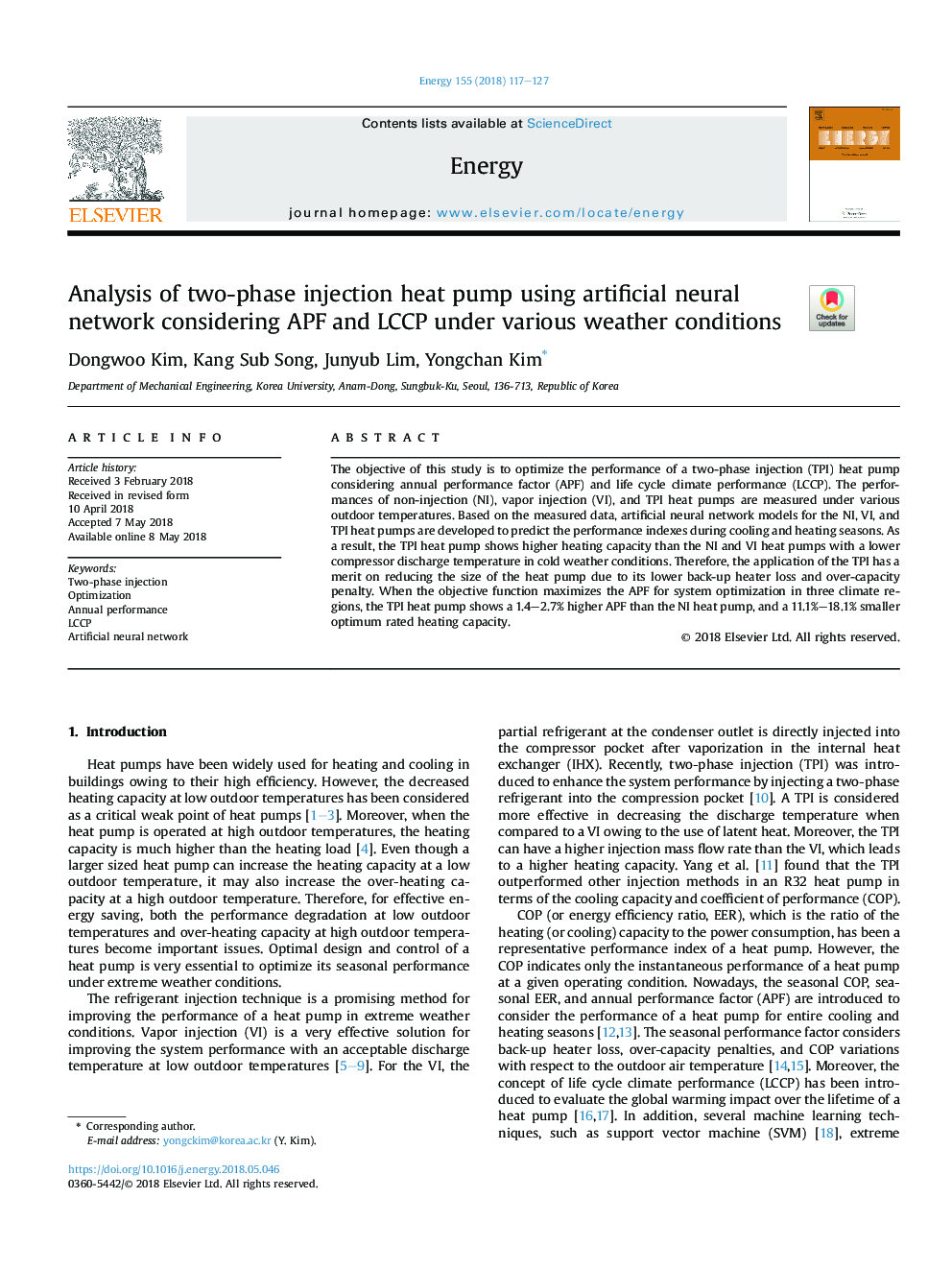| Article ID | Journal | Published Year | Pages | File Type |
|---|---|---|---|---|
| 8071399 | Energy | 2018 | 11 Pages |
Abstract
The objective of this study is to optimize the performance of a two-phase injection (TPI) heat pump considering annual performance factor (APF) and life cycle climate performance (LCCP). The performances of non-injection (NI), vapor injection (VI), and TPI heat pumps are measured under various outdoor temperatures. Based on the measured data, artificial neural network models for the NI, VI, and TPI heat pumps are developed to predict the performance indexes during cooling and heating seasons. As a result, the TPI heat pump shows higher heating capacity than the NI and VI heat pumps with a lower compressor discharge temperature in cold weather conditions. Therefore, the application of the TPI has a merit on reducing the size of the heat pump due to its lower back-up heater loss and over-capacity penalty. When the objective function maximizes the APF for system optimization in three climate regions, the TPI heat pump shows a 1.4-2.7% higher APF than the NI heat pump, and a 11.1%-18.1% smaller optimum rated heating capacity.
Related Topics
Physical Sciences and Engineering
Energy
Energy (General)
Authors
Dongwoo Kim, Kang Sub Song, Junyub Lim, Yongchan Kim,
